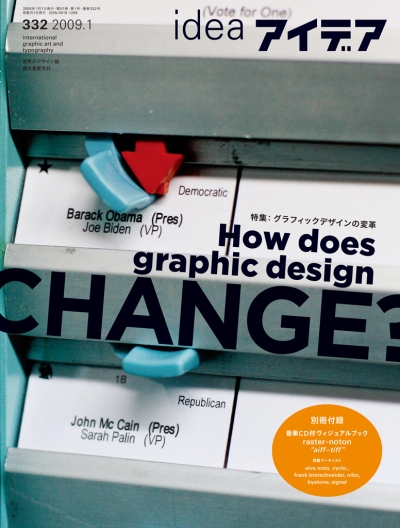
IDEA 332. How does graphic design CHANGE?
Are we not living in a time of change?
More than eighty years have passed since the term “graphic design” was born in the early twentieth century. Nonetheless, the nature of work carried out by graphic designers has not experienced any fundamental change. Yet, it is apparent that the line between the private and public domains of activity is blurring. The movement to acquire autonomy in client-oriented, heteronomous activities as well as the movement to gain a larger public audience for the products of self-initiated, autonomous activities are already underway. These two movements are not isolated from one another but, in fact, intermingle in the daily practice of designers.
So let us ask: in modern society, what mode of production will designers attempt to utilize and, on a daily basis, how will they attempt to construct the world in which they live? The projects gathered here may not lead to a dramatic change that is visible to the eye. But, make no mistake: these projects depict the reality before our eyes.







